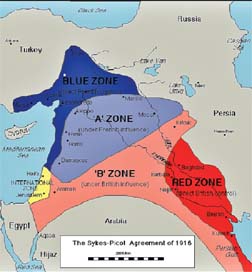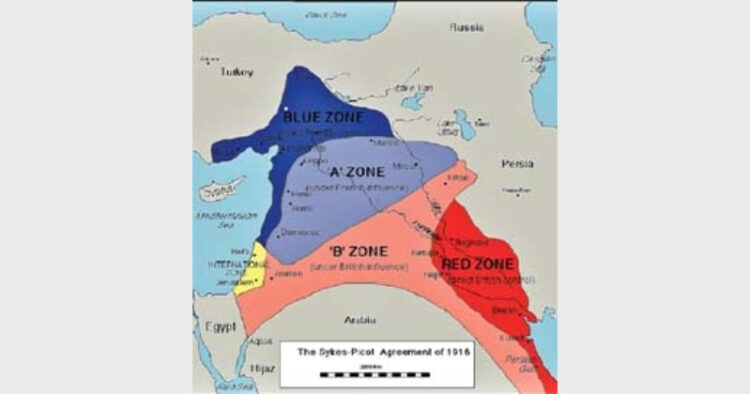 Intro: The emergence of Qatar-Saudi rivalry has damaged both countries’ external power and increased instability in the West Asia, in this scenario, India needs to carefully play its diplomatic card.?
Intro: The emergence of Qatar-Saudi rivalry has damaged both countries’ external power and increased instability in the West Asia, in this scenario, India needs to carefully play its diplomatic card.?
The unfolding situation in West Asia and North Africa has not only put Indian diplomacy to test but is also likely to pose a challenge to India’s security concerns and economic interests. The region has brought both the local and external powers in the play. The sectarian divide between the Sunnis and the Shias has aggravated the situation to question the Sykes-Picot boundaries between the existing nation states. Setting up of the Caliphate by the Islamic State of Iraq and al-Sham (ISIS) is an indication that the knotty problem may not be resolved in the immediate future. Adding to India’s security concerns is the Sunni terrorist organisation al-Qaeda forming its new arm in the Indian sub-continent.
|
‘ UK will hunt down the murderers’? |
The region, long been known as a playground for external powers, is undergoing reconfiguration in its geopolitics which in future is likely to impact the geo-economics also. Though the region has a love-hate relationship with external players, it cannot resolve most of its core problems without external influence, interference or intervention. Despite its declining influence, the US continues to be the power that has the political will and military capability to exert itself in the region. But its attitude towards the Arab Spring and its policy of ‘rebalancing towards Asia Pacific’ has drawn criticism from its regional allies. Russia is seen coming back as a player in the region with its support for Iran and Assad regime in Syria and ongoing efforts to cultivate stronger relationship with Egypt (Russia’s handling of the Ukraine issue has demonstrated its growing assertiveness in world affairs). China, which sources about 50% of its imported oil from the region, is continuing to strengthen its economic leverage. Infact concerns are being raised that Japan and South Korea are also looking at this region for meeting their energy needs.
|
US bombs Islamic State near Baghdad The beheading of American Journalist James Foley, Steven Sotloff and British aid worker David Haines raised the stakes in the battle against the jihadists. The United States have bombed the Islamic State near Baghdad in support of Iraqi Forces in its expanded campaign against Islamic State jihadists. |
The sectarian divide between the Sunnis and the Shias has made Saudi Arabia and Iran active in mobilising their influence in the region. The six-member body, Gulf Cooperation Council (GCC) that is supposed to anchor the region, is suffering from intra-GCC rivalry which is threatening to alter the fragile balance with the group. The emergence of Qatar-Saudi rivalry is one of the major issue- Qatar’s desire to chart an independent path led it into confrontation with Saudi Arabia, particularly in Egypt and Syria. This has damaged both countries’ external power and increased instability in the West Asia.
Iran is coming out of its isolation after the interim agreement with P5+1 resulting in partial lifting of sanctions. Iran-Saudi Arabia rivalry has taken new dimensions with Iran harbouring the ambition to lead the Shias in the region. Way back in 2004, King Abdullah of Jordon apprehended the emergence of Shia Crescent embracing Iran, Iraq, Syria and Lebanon. This fear was also echoed by the then Egyptian President Hosni Mubarak and Saudi Foreign Minister Prince Saud Al Faisal. However, with the emergence of Hezbollah in Lebanon, rule of the minority Alawites Shias in Syria, the nascent Shia empowerment and leadership in Iraq after the fall of Saddam Hussein and US withdrawal and emergence of new Zaydi (Shia) fighting force in Yemen, the dream of Shia Crescent seems to be realty.
In the global Muslim population of 1.4 billion, Shias constitute 13%, but the maximum concentration of Shias is in Iran and Arab world. If Iran is excluded, Arab Shia will constitute one-third of the total native population. In Iraq, Shias constitute about 60% of the total population of 35 million. In Bahrain two-third of the native population of half million is Shia. In Kuwait, 30% of the native population of 1.2 million is Shia, while in Saudi Arabia out of the total native population of 20 million, 13 % is Shia. But Ismaili Shias in Saudi Arabia are concentrated in Eastern Province, Najran and Jizan Province. In Syria, Alawi Shias constitute just 12% of the total population of 23 million. Assad family of Alawi Shia sect has been ruling over Syria since 1971.
All the Shia sects in the region have the support of Iran which is determined to emerge as a major player in the region. Saudi Arabia is, however, the natural leader of Sunnis in the region. But both Iran and Saudi Arabia were in the forefront of supporting the Palestine cause. However, in the recent Israeli operation in Gaza that took place in the backdrop of ISIS occupation of over 40,000 sq km of Iraq, the response from both Iran and Saudi Arabia was negligible.
The sharp sectarian divide between the Sunnis and the Shias in the region may have spillover effect on Muslim population in India and elsewhere in the world. India is the third largest country having Muslim population. There are already reports of some Sunni Muslims from India joining the ISIS adventure in Iraq and some Shias willing to go to Iraq to defend Najaf and Karbala. This sectarian divide between Shias and Sunnis in India may result in a new problem.
The challenge facing India is to balance its political equations and economic interests with major regional and external players in the region. India’s energy imports from the region are about 63% of total oil imports.
West Asia and North Africa is also home to 47% of world’s natural gas reserves. The region is a leading trading partner for India with a total trade of about $200 billion. The region hosts about seven million Indian expatriates who send considerable amount of remittances back home. The Gulf countries have huge amount of Sovereign Funds that can be invested in several infrastructure projects in India
Though the present crisis has not impacted on global oil and gas prices due to ample stocks, the turmoil in the region is likely to impact upon future investment climate and production in the long run.
If the Sykes-Picot boundaries, arbitrarily fixed by the British and the French after the World War-I, get replaced and new boundaries are drawn based on sectarian divide (The ISIL wants the border gone), the entire geopolitics and geo-economics of the region would undergo change. The ISIS Caliphate has begun the process of earmarking its areas and capturing oil fields and refinery at Mosul. It is still holding 40 Indian construction workers in captivity. In this emerging situation, India needs to carefully play its diplomatic card keeping in view its security and economic interests.
-Ashok B Sharma ??




 Recently, the Islamic State jihadi group has released a video that appears to show the beheading of a British citizen David Haines, 44, an aid worker who was captured after he arrived in Syria in 2013. Haines was in the Royal Air Force for 12 years before moving into aidwork.
Recently, the Islamic State jihadi group has released a video that appears to show the beheading of a British citizen David Haines, 44, an aid worker who was captured after he arrived in Syria in 2013. Haines was in the Royal Air Force for 12 years before moving into aidwork.









Comments